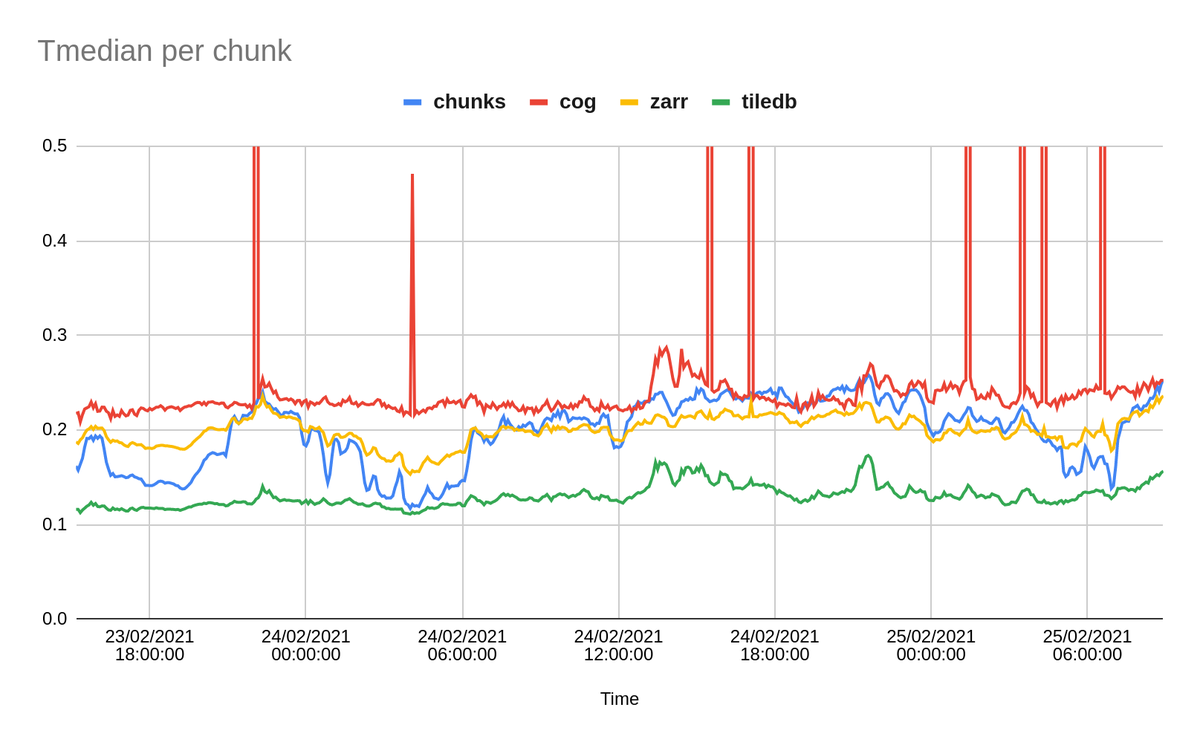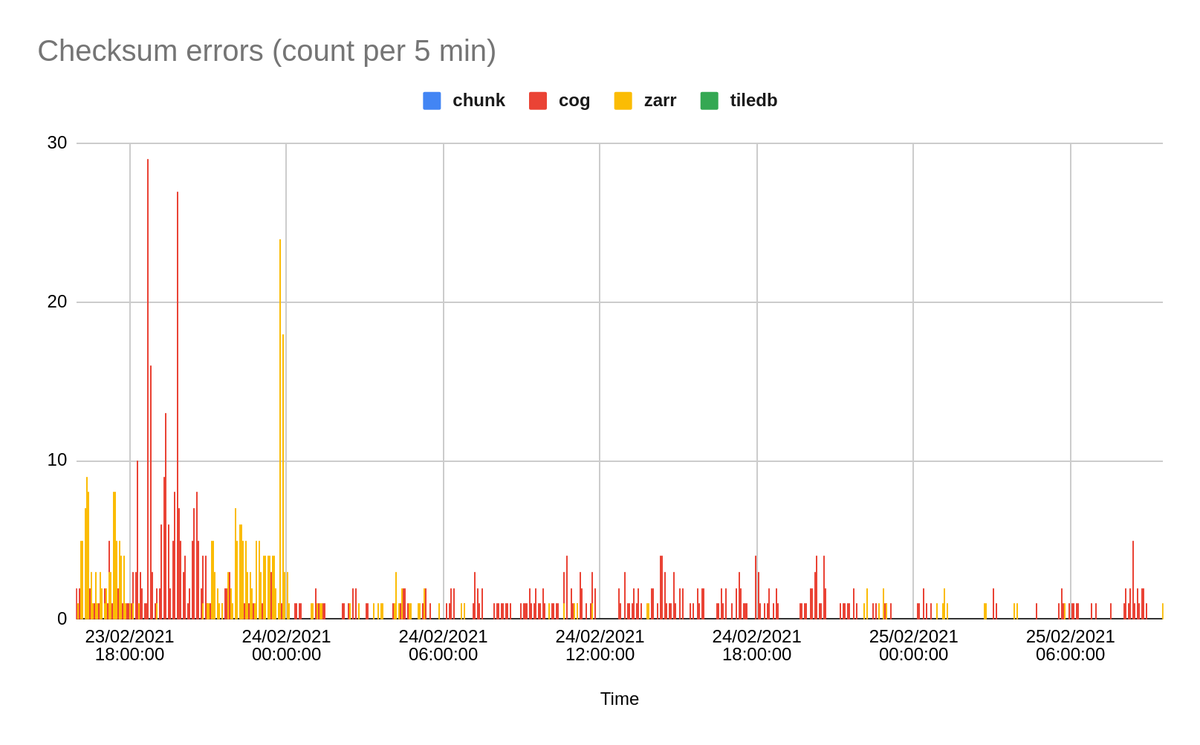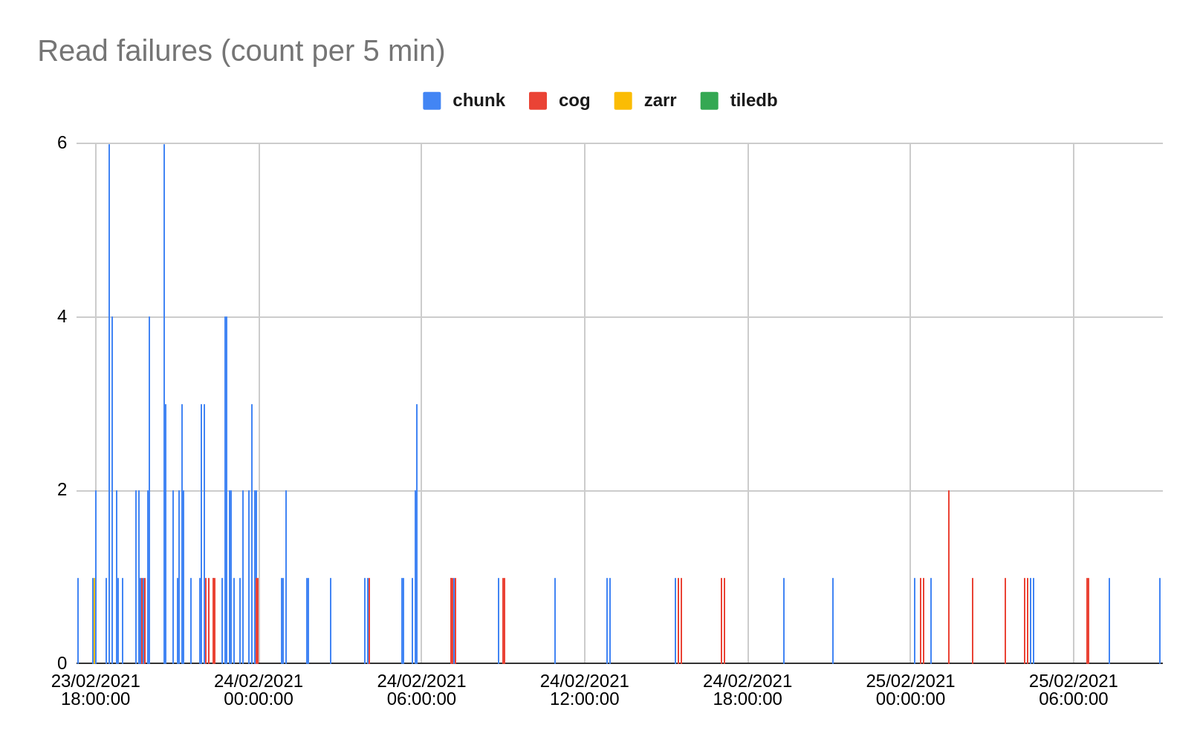@cogeotiff vs. @zarr_dev vs. @tiledb !
Last week @_VincentS_ asked if there was any content on comparing COGS vs ZARR.
https://twitter.com/_VincentS_/status/1455933487136100356
Here">https://twitter.com/_VincentS... is some info on internal testing we did at @SatelligenceEO
Last week @_VincentS_ asked if there was any content on comparing COGS vs ZARR.
https://twitter.com/_VincentS_/status/1455933487136100356
Here">https://twitter.com/_VincentS... is some info on internal testing we did at @SatelligenceEO
We use @googlecloud for imagery processing.
We built our own EarthEngine-like tools that do anything we need inside a @kubernetesio cluster and uses cloud storage as a data store.
All went fine, until one day it didn& #39;t.
We built our own EarthEngine-like tools that do anything we need inside a @kubernetesio cluster and uses cloud storage as a data store.
All went fine, until one day it didn& #39;t.
After preprocessing satellite data, we stored data as 512x512 chunks, each a single-band non-COG tif.
With thousands of jobs running simultaneously, we were seeing lots of GDAL read failures and sometimes also corrupted data when reads were successful.
More load = more errors
With thousands of jobs running simultaneously, we were seeing lots of GDAL read failures and sometimes also corrupted data when reads were successful.
More load = more errors
We tried to work around this by adding retries, and reading the same data twice to check whether the actual data was read correctly
-> Performance down the drain.
We thought this might be a Google specific issue, but we could not really find anything on the matter.
-> Performance down the drain.
We thought this might be a Google specific issue, but we could not really find anything on the matter.
Enter Vincent, one of our Twitterless engineers
He compared COG, ZARR and TileDB for performance and errors on a single S2 scene.
The test:
Read random 512x512 data for single band
Compare checksums of original scene and stored data
Log:time, checksum errors and read failures
He compared COG, ZARR and TileDB for performance and errors on a single S2 scene.
The test:
Read random 512x512 data for single band
Compare checksums of original scene and stored data
Log:time, checksum errors and read failures
Then add some heat by scaling up.
15:00 - 17:30 : scale to 500 jobs (34 vm nodes)
17:30 - 20:50 : scale to 1500 jobs (100 nodes)
20:50 - end : run with 100 jobs (8 nodes)
Time is indicated in the result graphs
15:00 - 17:30 : scale to 500 jobs (34 vm nodes)
17:30 - 20:50 : scale to 1500 jobs (100 nodes)
20:50 - end : run with 100 jobs (8 nodes)
Time is indicated in the result graphs
RESULTS
Chunks = old fashioned tifs, stored in 512x512 files
COG, ZARR and TileDB are single scene stored in a single file.
first up: READ TIME
COGS perform the worst. TileDB both fastest and most stable
Chunks = old fashioned tifs, stored in 512x512 files
COG, ZARR and TileDB are single scene stored in a single file.
first up: READ TIME
COGS perform the worst. TileDB both fastest and most stable
Second: CHECKSUM ERRORS
COG and ZARR both get checksum errors and more under heavy load (between 17:30-21:00) TileDB no errors
COG and ZARR both get checksum errors and more under heavy load (between 17:30-21:00) TileDB no errors
In conclusion we chose TilleDB, because it& #39;s the most stable, highest performant format for our situation. Additional TileDB benefits include
* Storing xd data (so also timeseries 4D data)
* Ability to do time travelling, because each write has its own timestamp!
* Storing xd data (so also timeseries 4D data)
* Ability to do time travelling, because each write has its own timestamp!
These results are of course quite a specific for our specific environment, which might turn out different for doing similar stuff on e.g. AWS, Azure etc!

 Read on Twitter
Read on Twitter




